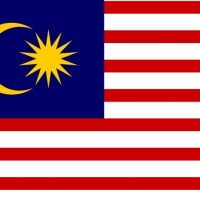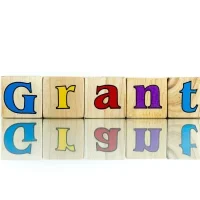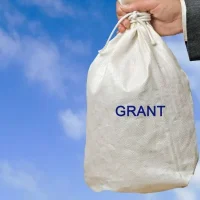The urgency of climate change has never been more pronounced, and the need for innovative solutions is paramount. The Climate Action Window’s Third Call for Proposals represents a significant opportunity for NGOs, community leaders, and grant seekers to contribute to meaningful environmental initiatives. This call aims to mobilize resources and support projects that address climate change mitigation and adaptation, fostering resilience in vulnerable communities.
By providing funding and technical assistance, this initiative seeks to empower organizations that are committed to creating sustainable solutions in their local contexts. As we navigate the complexities of climate action, it is essential to recognize the diverse range of projects that can be funded under this call. From renewable energy initiatives to sustainable agriculture practices, the scope is broad and inclusive.
The Climate Action Window encourages innovative approaches that not only address immediate environmental challenges but also promote long-term sustainability. This article will delve into the eligibility criteria, key components of successful proposals, and tips for developing impactful projects, ensuring that potential applicants are well-equipped to seize this opportunity.
Eligibility Criteria for Applying to the Climate Action Window’s Third Call for Proposals
Eligible Applicants
To be eligible for funding through the Climate Action Window’s Third Call for Proposals, organizations must meet specific criteria. Generally, eligible applicants include non-governmental organizations, community-based organizations, and other entities that demonstrate a strong commitment to climate action.
Proven Track Record and Alignment with Climate Goals
Applicants must have a proven track record of implementing projects related to environmental sustainability or community resilience. This experience not only showcases the organization’s capability but also builds trust with funders. Additionally, applicants must align their proposed projects with the overarching goals of the Climate Action Window, demonstrating how their initiatives will contribute to climate change mitigation or adaptation efforts.
Targeting Vulnerable Populations and Regions
Projects should ideally target vulnerable populations or regions disproportionately affected by climate change. By focusing on inclusivity and equity, applicants can enhance their proposals’ relevance and impact, ensuring that they resonate with the funders’ priorities.
Key Components of a Successful Proposal for the Climate Action Window’s Third Call
Crafting a successful proposal requires a clear understanding of its essential components. First and foremost, a compelling narrative is vital. This narrative should articulate the project’s objectives, the specific climate challenges it addresses, and the anticipated outcomes.
A well-defined problem statement sets the stage for the proposal, allowing reviewers to grasp the urgency and significance of the proposed intervention. Additionally, incorporating data and evidence to support claims can strengthen the proposal’s credibility. Another critical component is a detailed project plan that outlines the methodology and activities involved in implementation.
This plan should include timelines, milestones, and responsible parties for each task. Furthermore, a robust monitoring and evaluation framework is essential to demonstrate how the project’s success will be measured. Funders are increasingly interested in understanding how their investments will yield tangible results, so providing clear metrics for success can significantly enhance a proposal’s appeal.
Tips for Developing a Climate-Resilient Project Proposal
Developing a climate-resilient project proposal requires a strategic approach that considers both current and future climate scenarios. One effective strategy is to conduct a thorough vulnerability assessment of the target community or region. This assessment should identify specific climate risks and challenges faced by local populations, allowing applicants to tailor their proposals accordingly.
By addressing these vulnerabilities directly, organizations can demonstrate their commitment to building resilience and fostering adaptive capacity. Collaboration is another key element in developing a successful proposal. Engaging with local stakeholders, including community members, government agencies, and other NGOs, can provide valuable insights and foster a sense of ownership over the project.
Collaborative efforts not only enhance the proposal’s credibility but also increase its chances of sustainability beyond the funding period. Additionally, highlighting partnerships in the proposal can showcase a collective commitment to addressing climate challenges, which is often appealing to funders.
Understanding the Review and Selection Process for the Climate Action Window’s Third Call
The review and selection process for proposals submitted under the Climate Action Window’s Third Call is designed to ensure transparency and fairness. Typically, proposals undergo an initial screening to verify eligibility criteria before being evaluated by a panel of experts in climate action and project management. Reviewers assess each proposal based on predefined criteria, including relevance to climate goals, feasibility of implementation, and potential impact on target communities.
It is essential for applicants to understand that feedback may be provided during this process, especially for those whose proposals are not selected for funding. This feedback can be invaluable for refining future proposals or improving project design. Moreover, successful applicants may be required to engage in further discussions with funders to clarify aspects of their proposals or provide additional information before final approval.
Resources and Support Available for Applicants to the Climate Action Window’s Third Call
Accessing Valuable Resources
Navigating the application process can be daunting; however, numerous resources are available to support potential applicants. Many organizations offer workshops and webinars focused on proposal writing and project design specifically tailored to climate action initiatives. These sessions often provide insights into best practices and common pitfalls to avoid when crafting proposals.
Leveraging Online Platforms and Networks
Additionally, online platforms and networks dedicated to climate action can serve as valuable resources for connecting with other organizations and sharing knowledge. Engaging with these communities can foster collaboration and provide access to tools that enhance project development. Furthermore, many funding agencies offer guidance documents outlining their priorities and expectations for proposals, which can be instrumental in aligning project ideas with funder interests.
Enhancing Chances of Securing Funding
In conclusion, the Climate Action Window’s Third Call for Proposals presents an exciting opportunity for NGOs and community leaders committed to addressing climate change. By understanding eligibility criteria, crafting compelling proposals, and leveraging available resources, applicants can enhance their chances of securing funding for impactful projects. As we collectively strive towards a more sustainable future, it is imperative that we harness our collective expertise and creativity in developing solutions that not only mitigate climate change but also empower communities to thrive in an uncertain world.
For organizations looking to enhance their climate resilience strategies, the Climate Action Window’s third call for proposals offers a significant opportunity. In a related context, those interested in broader educational initiatives that intersect with sustainable development might find the “Call for Proposals: Regional Teachers Initiative for Africa and Europe” particularly relevant. This initiative aims to empower educators in both continents, fostering a cross-cultural exchange of knowledge and practices that could include environmental education. To explore more about this educational funding opportunity, you can visit the detailed call for proposals here.
FAQs
What is the Climate Action Window’s Third Call for Proposals?
The Climate Action Window’s Third Call for Proposals is a funding opportunity for projects that aim to enhance climate resilience in vulnerable communities. It is part of the Green Climate Fund’s efforts to support climate action and adaptation in developing countries.
Who can apply for the Climate Action Window’s Third Call for Proposals?
The call for proposals is open to a wide range of entities, including national and sub-national government entities, non-governmental organizations, community-based organizations, and private sector companies. Eligibility criteria may vary depending on the specific requirements outlined in the call for proposals.
What types of projects are eligible for funding through the Climate Action Window’s Third Call for Proposals?
Projects that focus on building climate resilience, enhancing adaptive capacity, and implementing climate change adaptation measures in vulnerable communities are eligible for funding. This may include initiatives related to agriculture, water resource management, infrastructure development, and community-based adaptation strategies.
How can organizations apply for the Climate Action Window’s Third Call for Proposals?
Interested organizations can access the application guidelines and forms through the official website of the Green Climate Fund or the designated implementing entity for the call for proposals. The application process typically involves submitting a detailed project proposal outlining the objectives, activities, budget, and expected outcomes of the proposed project.
What is the deadline for submitting proposals for the Climate Action Window’s Third Call for Proposals?
The deadline for submitting proposals may vary and will be specified in the official call for proposals announcement. It is important for interested organizations to carefully review the guidelines and adhere to the specified deadline for submission.









































